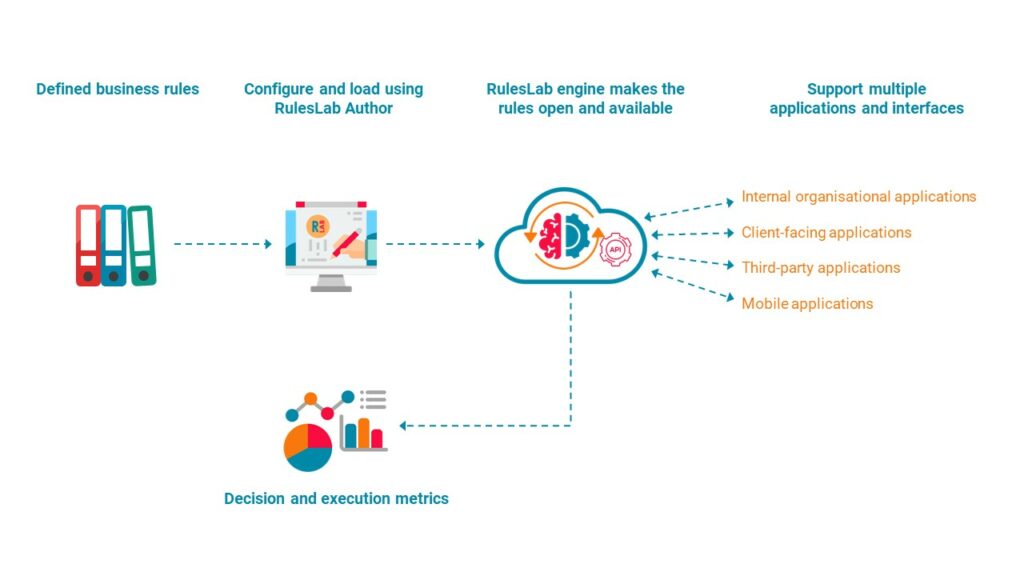
By Nickie Viljoen, RulesLab Director of Operations Australia
The challenge
Business rules guide businesses in daily decision making.
Without business rules, processing decisions can be difficult and time-consuming. Centralising business rules is more than just making your existing rules available online in a digital format. Documented business rules are still subject to human decisions, interpretation errors and subjective inconsistencies in decision-making processes.
However, having your business rules documented is inherently useful and provides the foundation for their automation.
Over time, organisations have automated business rules to varying degrees. Generally, automated business rules are embedded deep in programming logic and therefore hard to extract and understand.
The same rules or similar versions are embedded in multiple applications, sometimes even with differences in outcomes over time for what should be the same rule. Without consistent, accurate and reliable business rules, organisations can easily make misleading, faulty and potentially harmful decisions.
When business rules reside in multiple applications, updating or applying changes becomes harder and error prone. Over time, knowledge can be lost and the reasoning behind the original coding decisions becomes opaque.
Staff turnover creates a business risk that a change in an underlying business rule is not applied across all instances of its implementation and can be overlooked.
The possibilities
RulesLab is a low-code expert system that standardises rules across an organisation, managing them in a central repository.
RulesLab adheres to the ‘don’t repeat yourself’ (DRY) principle aimed at eliminating repetition of rules. It can automate and centralise organisations’:
- Coordination rules where requirements must be met for a process to continue. Eg, “Applicant’s state must be supplied”, “The organisation must have a valid ABN”, “Number of employees”.
- Qualification rules where a set of qualifications/disqualifications determines if a service rendered is valid. Eg, “Applicant must reside in Victoria”, “Organisation’s turnover must be less than $500,000”.
- Decision rules where the claim needs to be evaluated and assigned the next step, Eg, “Accept”, “Reject”, “Request more information”.
- Calculation rules where a total amount needs to be calculated.
With one change in RulesLab, all linked applications instantly use the updated rule. A single set of rules is accessed by multiple applications and users. Use of rules can be monitored for patterns and execution outcomes for proactive intervention.
Here’s how it works:

The benefits
- Interoperability and efficiency – by implementing business rules across an organisation, a business can save time and money by streamlining decisions.
- No need for manual translation of rules by individuals.
- Avoids embedding rules in bespoke, siloed applications across an organisation.
- The time between a business rule change and having it available operationally is significantly reduced.
- Transparency – exposing the decision-making process to a detailed level enables better modelling and tracking of business rules and outcomes.
- Reduced churn by making the right decision first time.
- Consistency across the entire organisation – you always get the same answer based on a multitude of variables without human error or subjectivity.
- Agility and scalability – automated rules are not limited to several human decision makers but can scale to accommodate millions of decisions. A business rule change can be applied once with no need for exhaustive change management and training.
- De-risking – removing the risk of individual hard-coded rules going into multiple, distinct applications. Rules can be added or removed with no impact on the underlying application.
RulesLab is a decision-support mechanism that applies streamlined, consistent methodology across an organisation about how rules are accessed and applied.
It centralises rules from myriad locations, including those stored in the heads of the people who act on them and those hard coded into various technology systems.
